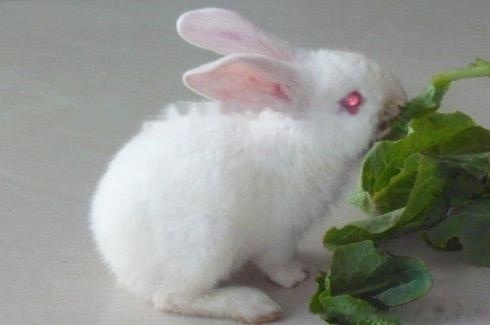
(1) Factors that affect the yield of rabbit hair
There are many factors that affect the yield of rabbit hair, such as breeds (better breeds have high hair yields because of The heritability of hair production performance is about 0.5), gender (generally female rabbits have about 25% higher hair production than male rabbits), age (from 3 months of age, hair production increases with age, to 16 months of age) Afterwards, it showed a downward trend, with an annual decrease of 10% to 15%; the use of hair rabbits is at most 3 years), body weight (larger rabbits have higher hair production, because the correlation coefficient between body weight and hair production is 0.65 ~ 0.7 ), nutrition (high nutrition and high hair production), health (high hair production in a healthy body), reproduction (the reproduction rate of female rabbits is negatively correlated with the hair production, that is, the higher the reproduction rate, the lower the hair production), Season and temperature (generally, the wool production in winter is about 25% higher than that in summer. The ideal temperature after shearing a rabbit is 20 to 25 °C in the first month, and about 15 °C in the second month. Therefore, controlling the ambient temperature can increase the hair production) , Management (scientific management of high hair production, shortening the shearing interval can increase the hair production, generally 60 days in summer in summer, 1 time in 75 days in winter is appropriate) and so on.
Therefore, the basic measures to increase the production of rabbit hair are to do a good job in the selection and breeding of good breeds, adjust the structure of the sex, age, and weight of the rabbit group, scientific breeding and management, and do a good job in reasonable hair picking, epidemic prevention and health care.
(2) Rabbit hair production method
1. Amino acid feeding: the content of sulfur-containing amino acids in rabbit hair is as high as about 15%, so methionine is added to the long-haired rabbit diet With 15 mg of cystine each, it can increase the hair yield by more than 12%.
2. Rare earth feeding: Adding 0.03% to 0.05% rare earth to the long-haired rabbit's diet can increase the wool yield by 8.5% to 9%.
3. Add sodium humate: Each rabbit is fed 2 ml of 3%-4% sodium humate solution daily, diluted with a small amount of water and then sprayed on the forage to feed, which can increase hair production15 %above.
4. Add trace elements: add 1% rabbit hair growth additive (containing 0.3 g of zinc sulfate, 0.3 g of copper sulfate, 0.33 g of ferrous sulfate, 0.07 g of cobalt chloride to the rabbit diet) , the above trace elements mix 100 grams), which can increase the gross yield by more than 10%.
5. Others: In addition, vitamin-rich fish liver oil (daily feeding amount of 0.6-1.2 ml per rabbit), pine needle powder ( The addition amount accounts for 10% of the diet), ryegrass, leeks, etc., and after shearing, wipe the body with white wine (add a little ginger juice), or take a medicated bath (add 150 to 200 grams of trichlorfon in 50 kg of warm water, and then add Sulfur powder 150 grams, mix well and then medicated bath), etc., can improve the hair yield.
![[Dog Training 5] The training method of pet dog dining etiquette](/static/img/12192/12192_1.jpg)




